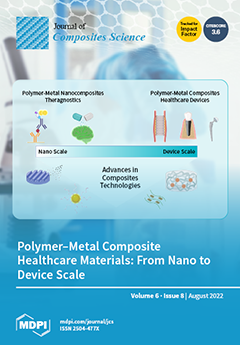The
Aloe vera (L.) Burman f. pulp extract (AE), obtained from the inner parts of
Aloe vera leaves, is rich in polysaccharides, including glucomannans, acemannans, pectic compounds, cellulose, and hemicelluloses; acemannan and glucomannan are considered the two main components responsible for most of
[...] Read more.
The
Aloe vera (L.) Burman f. pulp extract (AE), obtained from the inner parts of
Aloe vera leaves, is rich in polysaccharides, including glucomannans, acemannans, pectic compounds, cellulose, and hemicelluloses; acemannan and glucomannan are considered the two main components responsible for most of the plant’s therapeutical properties. Besides having anti-inflammatory activity, these polysaccharides accelerate wound healing and promote skin regeneration, thus they can be utilized in healing products. The objective of this study was to develop
Aloe vera mucilaginous-based hydrogels for topical use in psoriasis treatment. The hydrogels were prepared with 80%
w/w of
A. vera mucilaginous gel, evaluating two distinct polymers as the gelling agent: 1% carbopol 940 (FC1 and FC2) or 2% hydroxyethylcellulose (FH3 and FH4). FC1, FC2, FH3 and FH4 were evaluated for their organoleptic characteristics, rheological properties, pH and glucomannan content. Polysaccharide fractions (PFs) were extracted from the AE and used as a group of chemical markers and characterized by infrared (IR) spectroscopy and 1H nuclear magnetic resonance (
1H NMR). The quantification of these markers in the raw material (AE) and in the hydrogels was carried out using spectrophotometric techniques in the UV-VIS region. The hydrogels-based hydroxyethylcellulose (FH3 and FH4) had glucomannan contents of 6.76 and 4.01 mg/g, respectively. Formulations with carbopol, FC1 and FC2, had glucomannan contents of 8.69 and 9.17 mg/g, respectively, an ideal pH for application on psoriasis, in addition to good spreadability and pseudoplastic and thixotropic behavior. Considering these results, hydrogel FC1 was evaluated for its keratolytic activity in a murine model of hyperkeratinization. For that, 0.5 mL of test formulations FC1 and FPC (0.05% clobetasol propionate cream) were topically applied to the proximal region of adult rats daily for 13 days. After euthanasia, approximately 2.5 cm of the proximal portion of each animal’s tail was cut and placed in 10% buffered formalin. Then, each tail fragment was processed and stained with hematoxylin and eosin (HE), and the results obtained from the histological sections indicated a 61% reduction in stratum corneum for animals treated with the
A. vera hydrogel (FC1G) and 66% for animals treated with clobetasol propionate (PCG), compared to the group of animals that did not receive treatment (WTG). This study led to the conclusion that compared to the classic treatment (clobetasol propionate), the 80%
A. vera hydrogel showed no significant difference, being effective in controlling hyperkeratinization.
Full article





